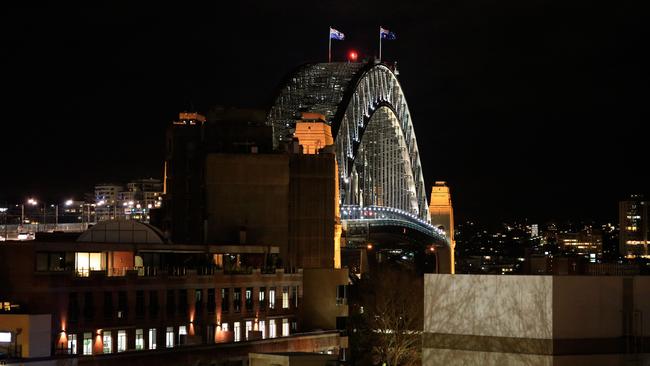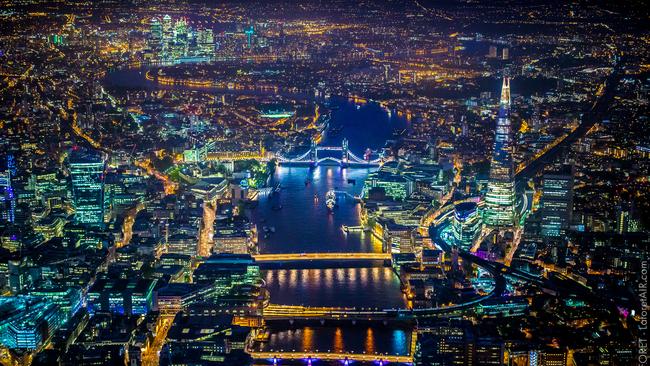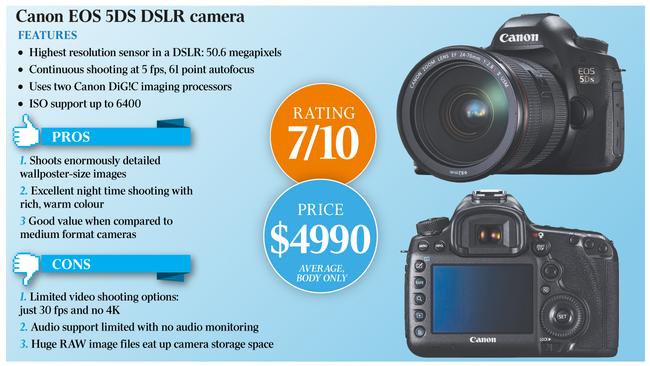Canon cameras, EOS 5DS and 5DSR: big pics for big price
This 50-million-pixel consumer camera can turn your snaps into wall-size posters. They will literally be larger than life.
A camera where every shot can be a wall poster. It sounds like overkill central, but that’s exactly what Canon is offering with its EOS 5DS and 5DSR cameras. Both are now available in Australia and boast a 50.6-megapixel sensor. That’s more than 50 million pixels in a photo in a DSLR. Even by Canon’s standard, that’s huge.
Until now, the EOS 5D Mark III with its 22-megapixel sensor was as good as it got for DSLRs. Anything beyond that was for uber-expensive studio-quality cameras. But do we really need 50 million pixels when our trusty DSLRs still do the job? Well, the 5DS packs just enough punch to test your resolve, despite the starting price of $5000.
While it targets high-end enthusiasts and professional photographers, there’s a lot this camera brings to a wider audience.
The first big feature is posters. Apart from squishing your favourite 50-megapixel shots on to your computer screen you can now plaster them full-sized on your walls. They will literally be larger than life.

If you’re in business, you can snap extreme high resolution images for real estate billboards, or create posters from a fashion shoot. The advantage over a studio camera is its continuous shooting at five frames per second, which studio cameras often can’t match. So in a fashion shoot, you could capture numerous poses and facial expressions quicker with the 5DS.
Another benefit for commercial photographers is the ability to substantially crop an image and still end up with detailed, high-resolution photos.
However, processing 50 million pixels on a DSLR is no mean feat. That’s why there are two Canon DIG!C 6 image processors, the camera equivalent of a dual-core processor. With just one, Canon says the camera couldn’t keep up with processing and saving to disk during a continuous shoot. Even so, we found it’s relatively slow to display images after shooting.
We tested the 5DS and found it is perfect for recording detail and action. Compared with the 5D Mark II, the 5DS delivers richer, warmer colour and significantly more detail. The Australian’s news photographer Hollie Adams, a Mark II user, also tested it and said there was virtually no need to tweak contrast and saturation levels in Photoshop as she would the older camera.

The EOS 5D supports an ISO of up to 6400 but there was little need in our tests to select large ISO settings. Or you could choose a higher ISO and have little noise.
There’s a mirror vibration feature to stop the tiny movement of the mirror from blurring photos, addressing another peril of using a finely tuned sensor in low light conditions. During shooting you can select from six focus modes, ranging from a single-point spot auto-focus through to 61-point automatic selection autofocus.
This camera can take very detailed and sharp city images from a helicopter at night, as shots by Pulitzer Prize winning photographer Vincent Laforet testify One of these adorns the wall at SunStudios in Alexandria, in Sydney’s inner west.
Being a DSLR, the 5DS is compatible with Canon’s 70-plus interchangeable ES lenses. It can’t use the cheaper EF-S lenses, but you’d be crackers to use this camera with el cheapo lenses anyway.

Video-wise, the 5DS is a let-down. It takes 1080p high-definition video, but not 4K, and not beyond 30 frames per second. It does have a time-lapse mode and you can create a 1080p video from the stills. But you’d be better off importing them to a video editing program and creating video from there. You can achieve up to 8K video resolution this way.
Audio is another limitation with no AV-out so you can’t hear what you’re recording.
There are slots for both a compact flash and SD card. You can save images to both and in different formats (RAW and JPEG) simultaneously.
But there’s a downside, namely image size. On the 5D Mark II, RAW images are typically 24 megapixels, but on the 5DS they can be more than 70 megapixels. So you’ll only fit 14 images per Gigabyte on a flash card. JPEG sizes are bigger too, at about 16MB.
The price might seem a bit steep but the 5DS offers amateur photographers capabilities usually reserved for professionals and their toys that cost a lot more. The EOS 5DS is available from Canon online and selected camera stores.
Rating: 7/10
Price: $4990 — average retail, body only



